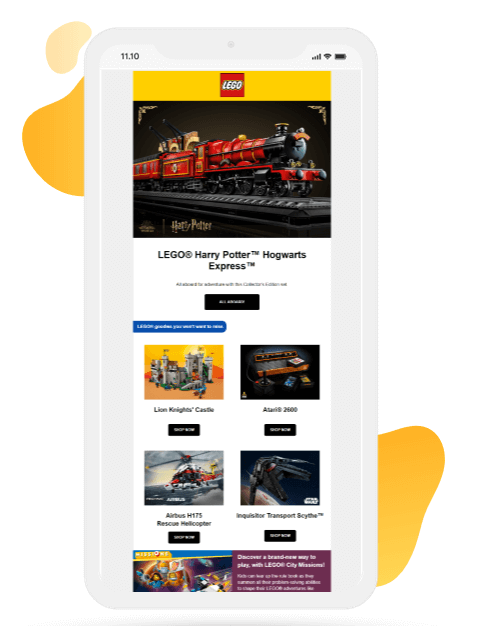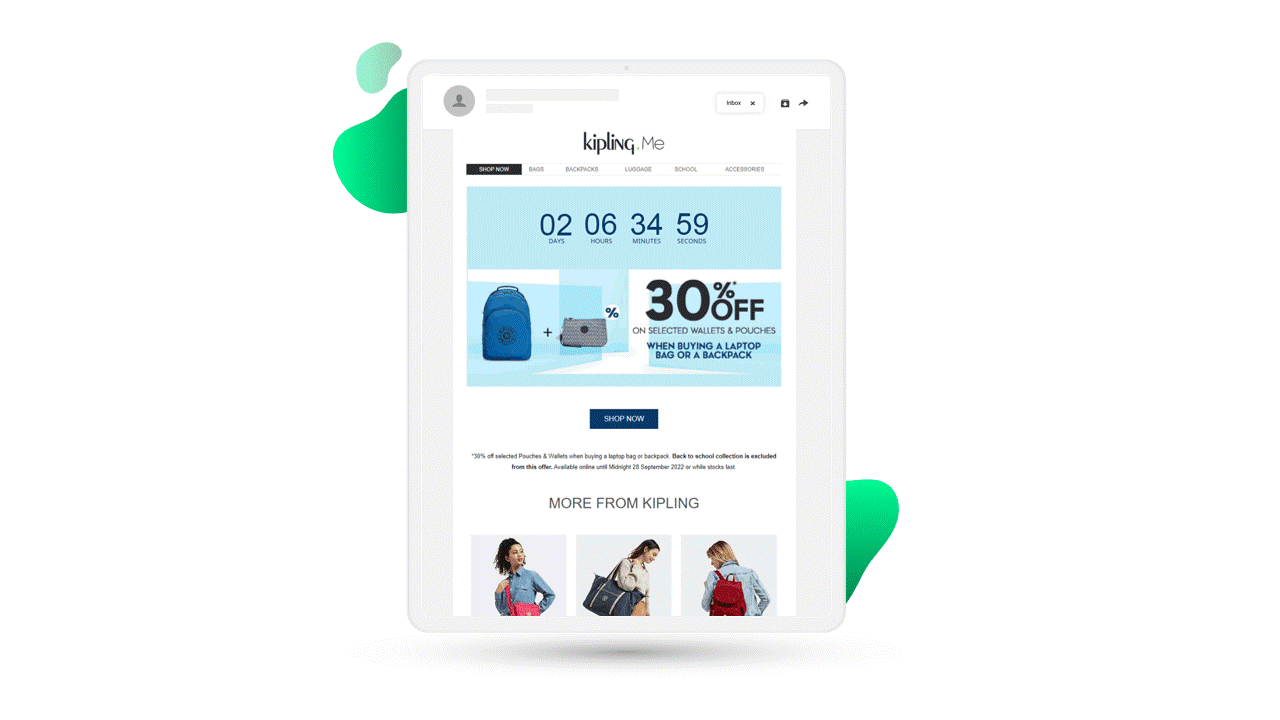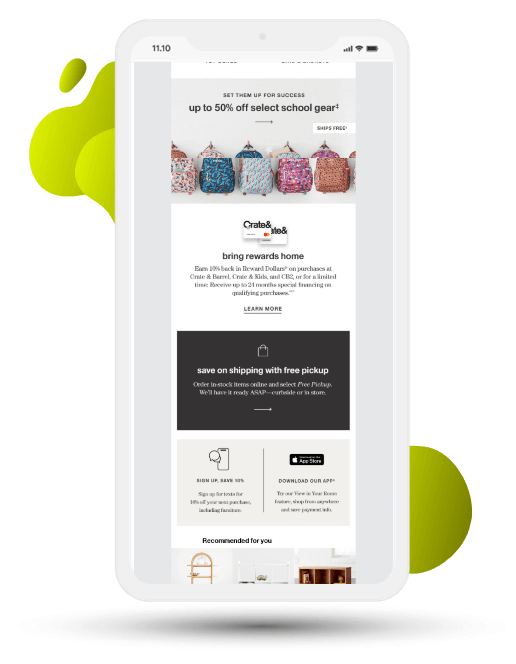School’s (almost) out for summer, and while children let loose and parents plan vacations and activities, it’s time for marketers to prepare their back-to-school campaigns. In the US, an estimated $72BN will be spent on back-to-school purchases in 2023. What’s more, last year 65% of spending was done via smartphone, presenting a prime opportunity for eCommerce retailers and brands.
With that in mind, it’s time to wow your customers with your back-to-school fare.
Here are 10 ways to get to the top of your email marketing class (with 10 back-to-school email examples to inspire you).
1) Reduce purchase anxiety with reviews and ratings
With more people turning from bricks to clicks for their shopping needs, social proof cues are more important than ever. Show shoppers that your products have been given the green light by other parents and guardians by displaying reviews and ratings alongside products in your emails. Two in three consumers find detailed product reviews useful when making a purchase and over half look for star ratings when making a decision. So if your products are highly rated, make sure your shoppers know about it.
Sock Shop shows off their five star ratings and positive reviews to ease purchase anxiety and reduce click to purchase.
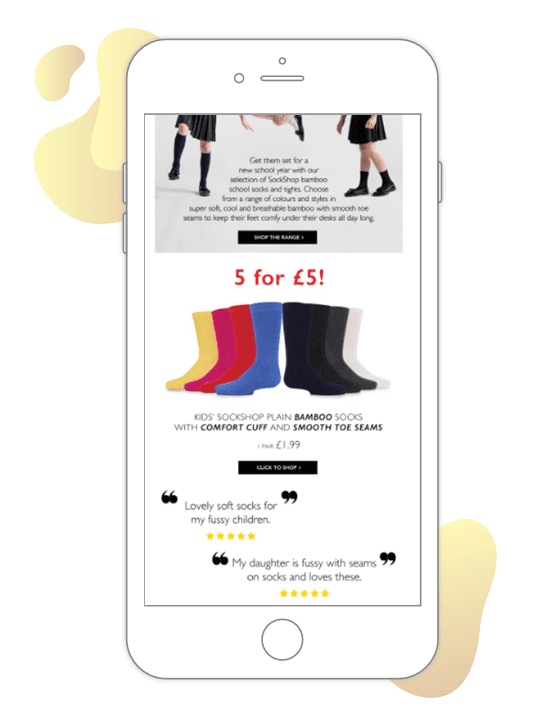
Source: Sock Shop email
2) Make products more desirable with popularity messaging
Popularity messaging is when retailers use real-time purchase and browse data to display how many other shoppers have recently viewed, carted or purchased a particular product. This tactic simultaneously increases urgency and makes products seem more desirable. And it’s proven to boost conversions – Buyagift has seen a 13% increase in sales since implementing popularity messaging into their automated discount emails. So if your products are popular enough to sit at the cool table, it’s time to let your shoppers know about it.
The Entertainer uses this social proof tactic to highlight how many people have recently bought their back-to-school products, making those items stand out and encouraging click-throughs in the process.
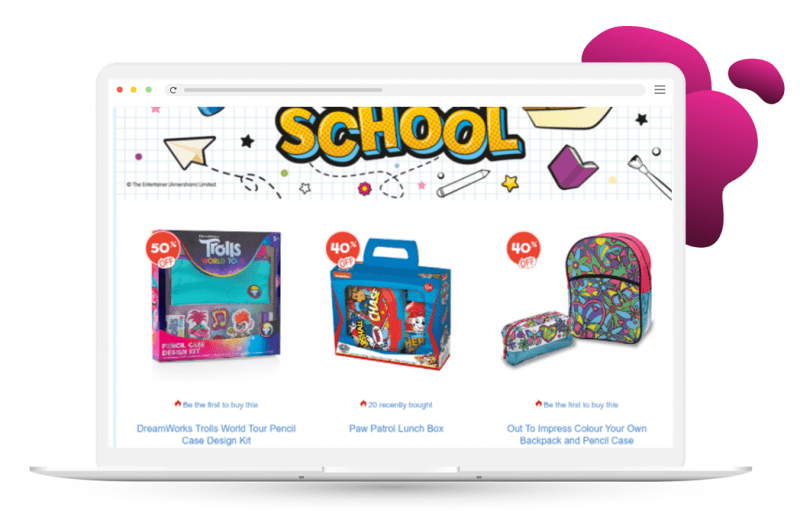
Source: The Entertainer email
3) Help shoppers make a purchase decision with product recommendations
Speaking of social proof, help shoppers make a purchase decision by showing them crowd sourced product recommendations in the form of trending items and best sellers. For shoppers who are accustomed to getting recommendations from helpful sales clerks in store, offering recommendations in your marketing emails and on your website is sure to get you a gold star. Plus, product recommendations can generate sales uplifts of up to 11%, making them an essential tactic in your back-to-school marketing toolkit.
Lego makes use of several types of product recommendations in the example below – including one that includes social proof. With the final product recommendations in the email, they show what’s currently trending, tapping into that wisdom of the crowd. This allows shoppers to be inspired by other customers, increasing chances of purchase.
Source: Lego email
4) Build trust with real people in your campaigns
With a plethora of products and content competing for your shoppers’ attention, brands that radiate authenticity stand out from the crowd. Using real people in your campaigns can help you foster trust and resonate with shoppers.
Etsy shows their human side by featuring four of their employees’ back-to-school stories and the products that help them make learning fun.
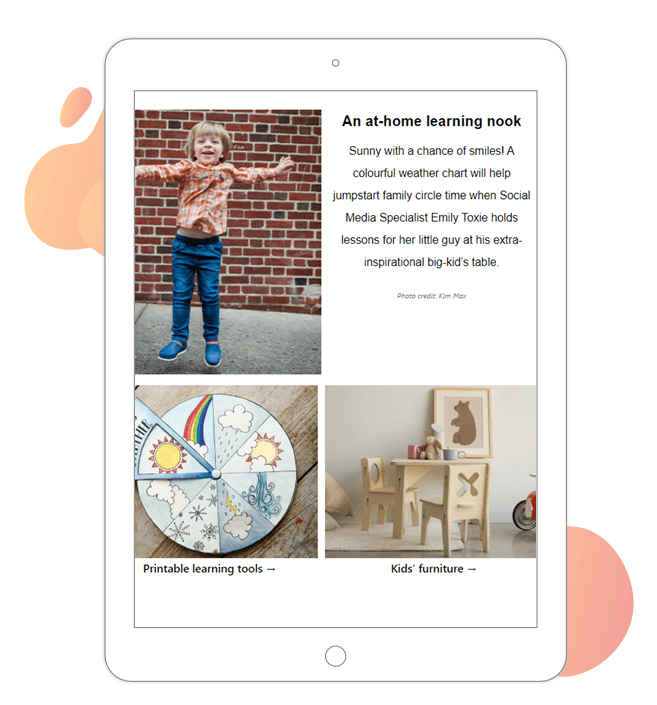
Source: Etsy email
5) Create urgency with countdown timers
Countdown timers are an effective tool to build excitement and urgency, especially for important deadlines such as the end of a back-to-school promotion.
Kipling used a countdown timer at the top of their back to school email marketing campaign to increase urgency by highlighting the end of their 30% off sale.
Source: Kipling email
6) Grab shoppers’ attention with your hero image
The hero image (also called a banner or header) is the first thing shoppers see when they open your email, which means getting your creative hat on with eye-catching designs and relevant content to ensure you make a good first impression.
Rip Curl adds interest to their email with an animated GIF, which helps bring their range of fun back-to-school backpacks to life.
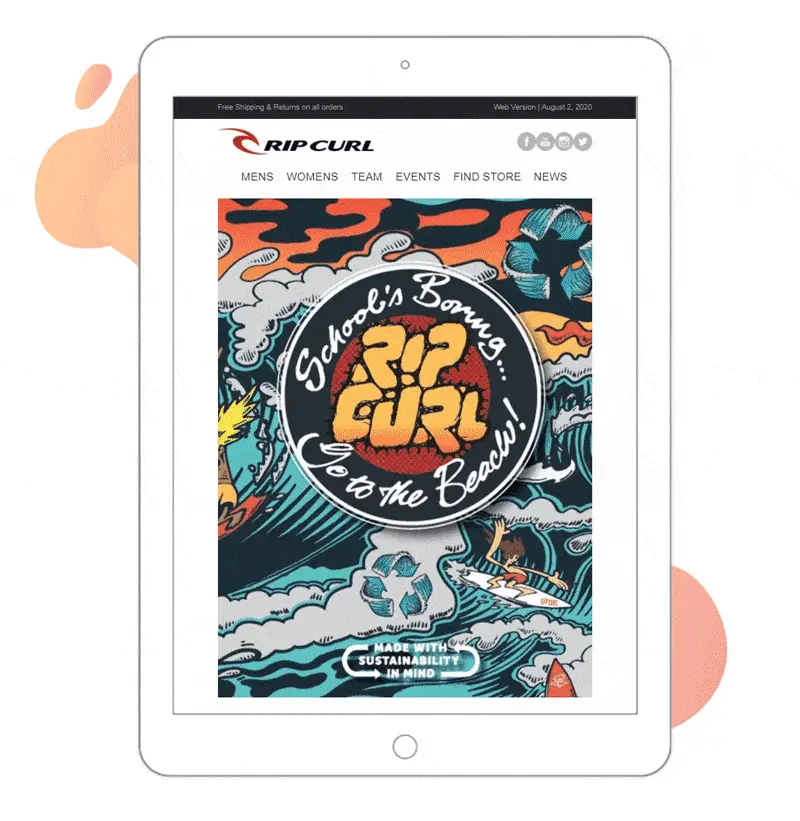
Source: Rip Curl email
For added impact and maximum relevance, use a dynamic hero image featuring the shopper’s most browsed brand or favorite color in the hero image to put them in buying mode.
7) Boost retention with replenishment emails
Back-to-school items such as pencil cases and shoes are replenishable by nature and tend to require re-purchasing every year due to being worn out or outgrown.
That’s where replenishment emails come in handy. These triggered emails serve to remind shoppers to repeat a purchase they previously made, helping to increase the likelihood of repeat purchases from your store. This kind of email should not be sent immediately after the shopper has made a purchase, but when the customer might soon be in need of a replacement. Think about the lifecycle of the product in question and use that information to guide your timing. Of course, it’s also worth bearing in mind that parents are likely to think about back-to-school purchases towards the end of the summer.
Ryman encourages back-to-school shoppers to restock their stationery supplies, highlighting items that are likely to need replenishing, such as ink and paper.
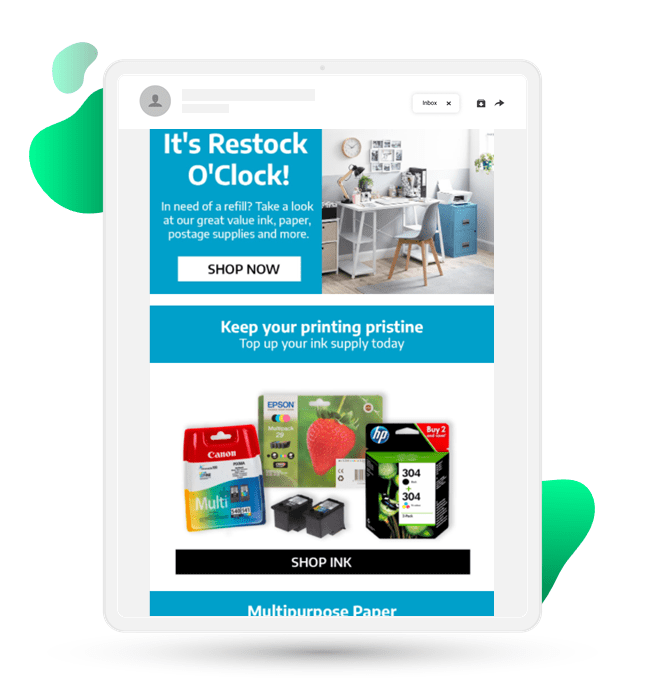
Source: Ryman email
8) Make sure shoppers don’t miss out with back-in-stock emails
63% of parents are expecting stockouts during the back-to-school shopping season due to supply chain disruptions, and 77% will switch to another brand if their preferred brand is not in stock or if it is too expensive.
The damage of stockouts extends beyond the direct consequence of a lost sale. First, there’s the possibility that the shopper will turn to a competitor to find the desired item. Then, there’s the long-term impact on customer satisfaction caused by the frustrating experience.
Back-in-stock alerts are an opportunity to turn a potentially negative experience into a positive one, keep customers engaged with your brand and get them back to your site to make a purchase. One in four shoppers want retailers to send them back-in-stock alerts, making this a valuable type of email to add to your back-to-school marketing toolbox.
Wex Photo Video uses back-in-stock email alerts to keep customers engaged and connect them with the product they had their eye on.
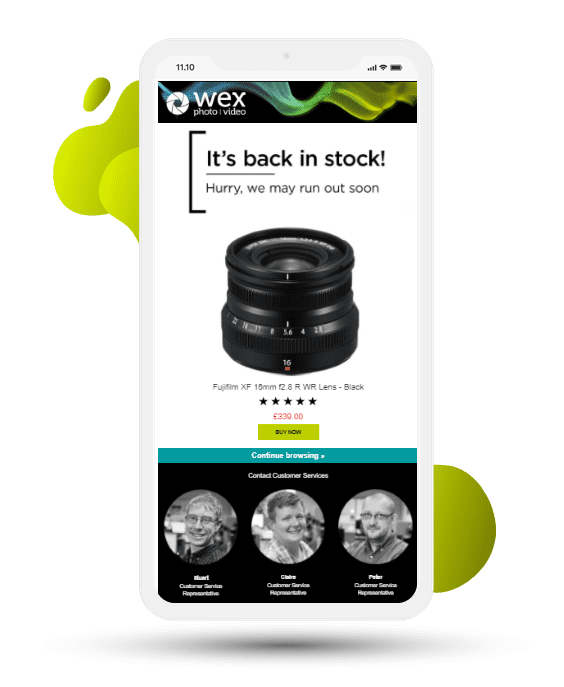
Source: Wex Photo Video email
Learn more: How to boost loyalty and avoid customers switching to different brands
9) Encourage customers to receive alerts through multiple channels
Almost every company nowadays sends out emails, adding to the multitude of emails customers get. Not many companies make use of the SMS channel, however, and not every company has their own app. You might be surprised how many customers would appreciate a text message or push notification from your app, as long as they know they signed up for it.
Crate&Kids knows this, and so includes a CTA in their email for customers to click on to download their app and/or sign up for texts.
Source: Crate&Kids email
10) Make your customers laugh
Making clever use of language is a great way to stay in your customers’ minds when they read your emails.
The Diamond Store makes use of puns both in their email and their subject line. Their subject line is ‘back-to-school blues’, with their email full of blue jewelry, as well as product recommendations with the heading ‘Best In Class’.
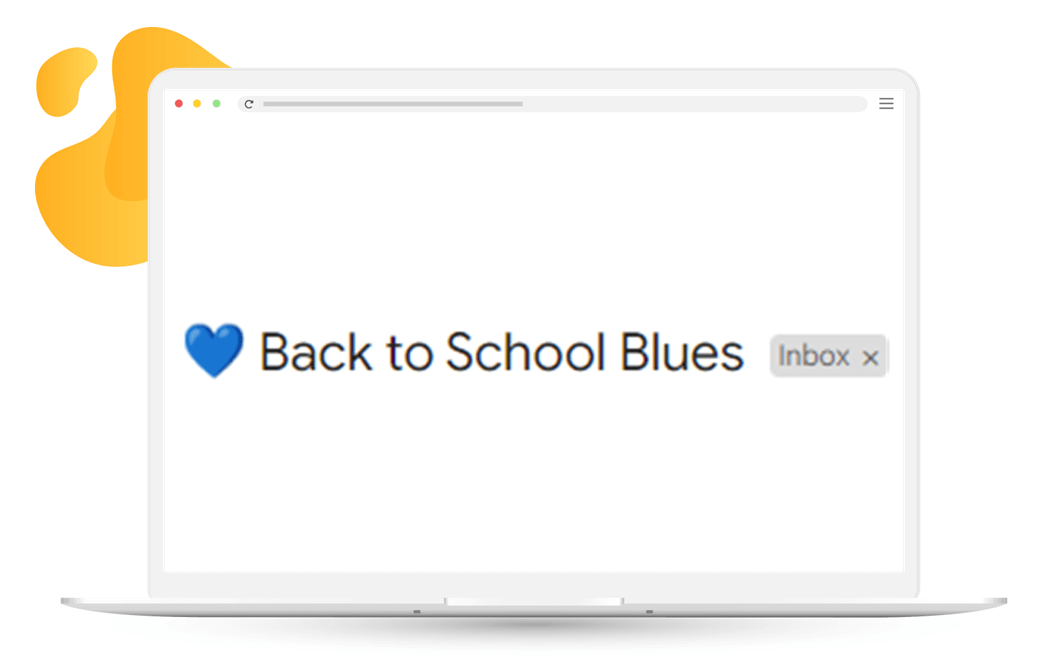
Source: The Diamond Store email
Source: The Diamond Store email
Final Thoughts
You can get more back-to-school email inspiration on our dedicated Pinterest board.
Download your copy of Five Easy Ways to Make Your Emails Perform Better for more email marketing tips.
Disclaimer
This blog post is for informational purposes only. Fresh Relevance is not claiming to provide its services to the companies and brand owners referred to in the blog post.



